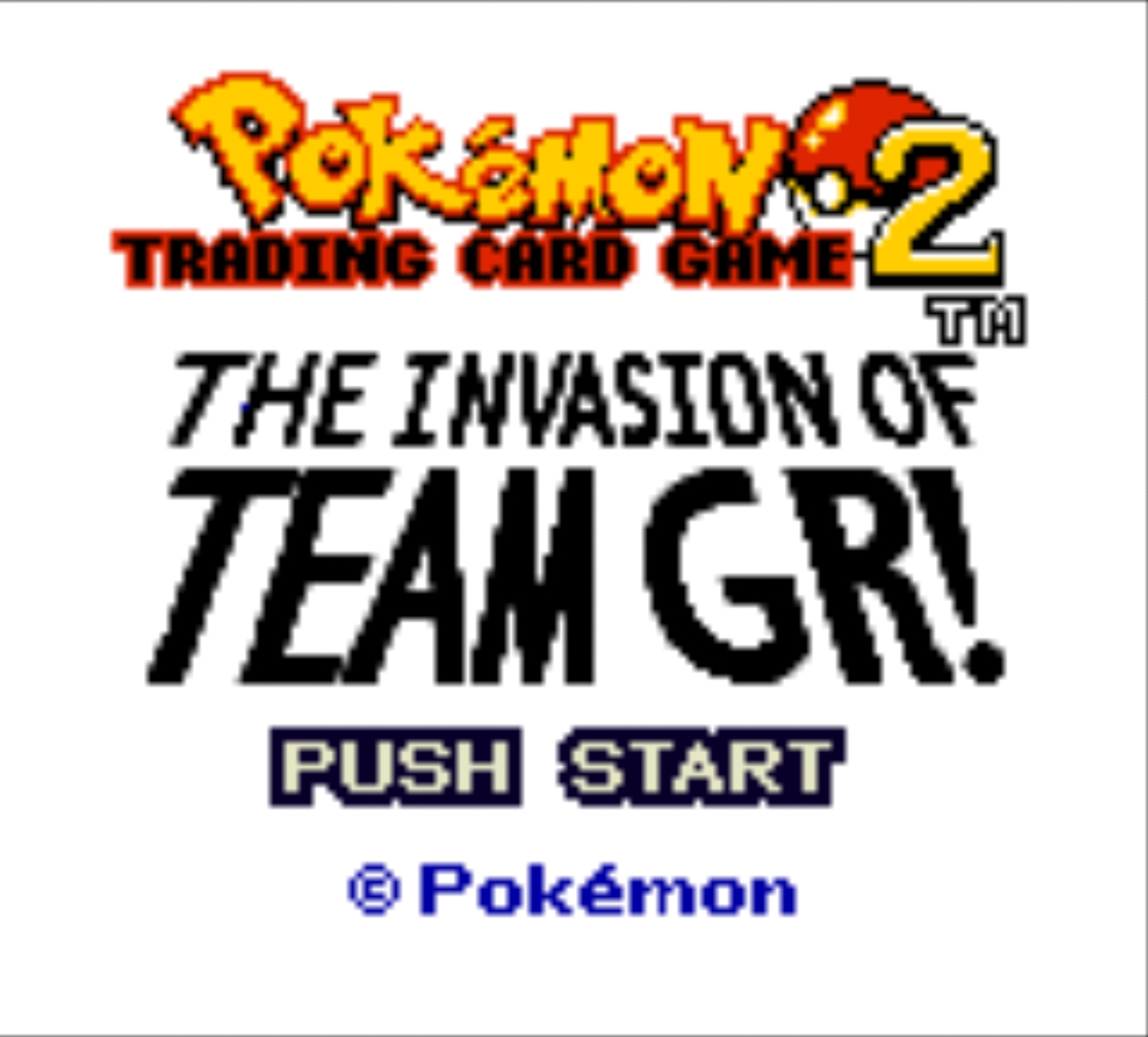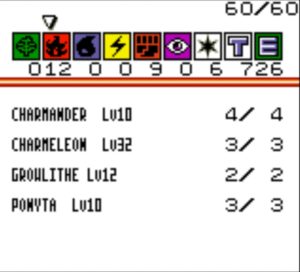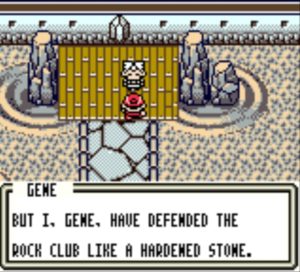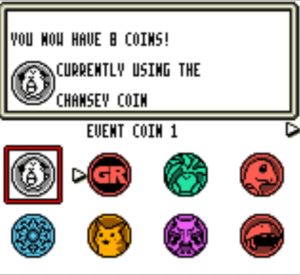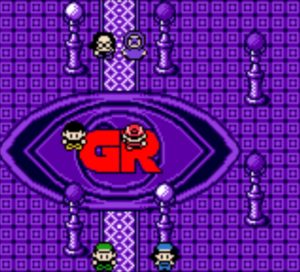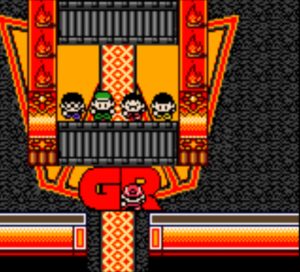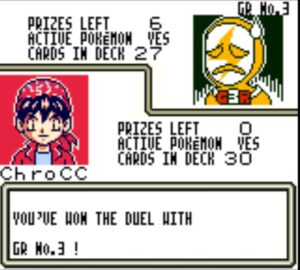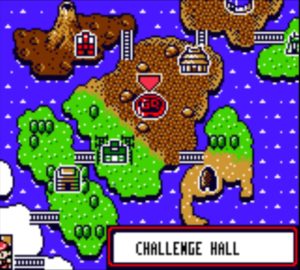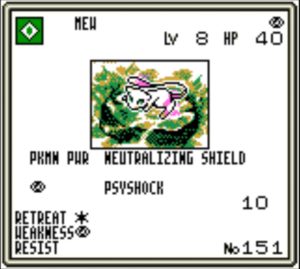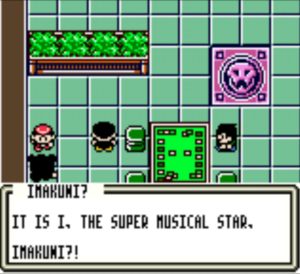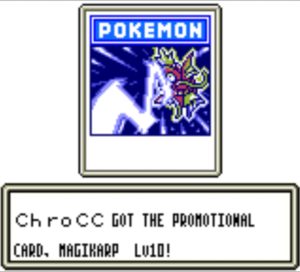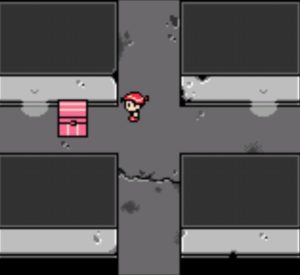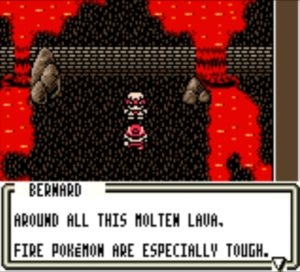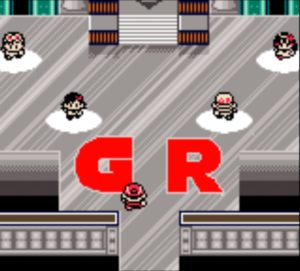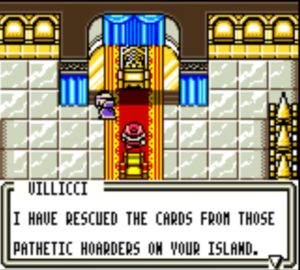Can you recall any Pokémon video games that sold poorly? And I mean poorly. Hey You Pikachu (2000), that oddball virtual pet game for Nintendo 64, sold over 250,000 copies in Japan. That’s pretty good. Pokémon Snap (1999) sold half a million. Pokémon Pinball (1999) sold millions worldwide. The first Mystery Dungeon games received decidedly mixed critic reviews, but still sold over 1.4 million copies in Japan alone. The Pokémon brand name all but guarantees sales, no matter the product.
Then why, of all spin-offs, did Pokémon Trading Card Game 2: The Invasion of Team Great Rocket do so badly, coming in at less than 100,000 total copies sold – evidently not enough, in Nintendo’s mind, to justify a localisation? By way of benchmark, Konami shifted 1.6 million (!) combined copies of Yu-Gi-Oh Duel Monsters 4, another card battle title for Gameboy Color released around the same time as Pokémon TCG2. Even the original Pokémon TCG game from 1999 did quite well, exceeding 600,000 sold in Japan alone, and another million-plus worldwide. But TCG2 is nowhere to be found on the 2001 charts for Japan. Surely it can’t be that bad, can it?
—
Before we get to the meat of this retrospective, I want to give a big shout-out to Artemis251, whose translation work is the reason I can play this game at all. Believe me, I tried in the early 2000s to find a finished fan localisation, but most such efforts stranded in Mason’s Lab (ie. the starting building), presumably abandoned once translators realised just how much text this game contains. That’s not just dialogue, of which there’s a lot considering how thin the plot is, but especially the huge quantity of card text and descriptions for all the cards never released in English.1 Per card, that’s a move overview page, a move description page (usually two), and a flavour page. The hallmark of a good translation is for it not to feel like you’re reading a translation, and Artemis has done a truly commendable job converting what I imagine was a rather dry and factual source text. Their homepage is here.
With that out of the way, here’s the game’s story. Team Great Rocket (abbreviated to GR in-game) have staged an invasion to seize everybody’s Pokémon trading cards, and they’ve carted off TCG Island’s Club Leaders to their own tropical island homebase to boot! (Yes, that’s two separate islands.) Four GR Admins remain to occupy Island 1’s eight elemental “Clubs”, or TCG Gyms, really. What exactly Great Rocket want with all these cards, or need the Club Cap’ns for, is unclear. Our first job is to liberate the Clubs by defeating the Admins, and win four pieces of a GR Coin that functions as a token required to visit and investigate the GR homelands. We’re aided in this quest by friendly rival Ronald, who seems to be the Hau / Hop encouragement type and regular booster pack fountain rather than a Silver-style sociopath, and by a Professor Mason who offers help and advice.
I take an instant liking to the game during a visit to the tutorial room. One of Prof. Mason’s lab assistants offers to teach me the TCG basics, which I politely decline. He replies that I’m “free to do whatever I want”. Yes, that’s what I like to hear! We walk out the broad doors of the TCG lab and Mason calls me back one last time to check if I’m absolutely sure I know what I’m doing. I respond by walking out. Freedom in a Pokémon game. It’s glorious.
We’re started off with a watered down Fire / Fighting deck that contains neither the famous base set Charizard nor any Machamp. It’s a bizarre Starter Deck altogether as it contains Ponyta, Growlithe, Diglett, and Spearow but no final evolutions except Raticate. We’d better hope our opponents are too feeble to survive into an endgame or we stand no chance of winning.
The game suggests we visit the Rock Gym Club. That seems odd. I ignore the suggestion and head for the Grass Club instead to exploit our type advantage. Here we’re given a couple of free “Lost Isle” packs that include a Fossil Moltres, and then we fight our first battle against one Brittany, whose Grass-types we wreck with Charmeleon. For winning we get two “Premier” packs that feature Bulbasaur on the cover but the second somehow contains a Charizard. This is going rather well. We’re not quite ready to run it until we get some Double Colourless Energies to use the card’s Pokémon Power to its full potential.
After roaming the map some more, I cave and head over to the Rock Club to progress the plot. A scene follows to explain how Gene, master of Rock Club, successfully resisted the Team GR invasion to maintain the Club’s autonomy and retain its members’ cards. All because Gene, like the Rock types he uses, is made of “hardened stone”! Good for you, buddy. We battle some guys around the Club including the place’s Chief Sculptor, and lose to all of them. I venture out to the Lightning Gym and am greeted by some quizmaster-like affair, with floors and walls draped in purple and a giant spotlight pinned on a purplish South Park’s Kenny lookalike and a greenhaired dude wearing sunglasses indoors. …Okay. GR4, who’s taken over this place, sure likes his swag. RNGesus blesses us with a win but we get no booster packs. Green-shades hipster is just too great an obstacle on Pokémon TCG2’s version of Nugget Bridge, so we make ourselves scarce again.
I would really like some more boosters, so we return to the Rock Club and try the Grass / Water deck we received for tracking down the Grass Leader in some remote corner of the map. It’s equally rubbish, but pretty much everything here is weak to its many Bulbasaur. (No Venusaur, naturally.) Ryan’s booster pack has Blastoise, nice! If only we had a Wartortle. The next guy, Andrew, leads with a bulky 90HP Snorlax that stalls our itty-bitty Bulbasaur long enough for him to get a Rhydon up and running. I never had a chance. And mind you, this is the Rock Club, the game’s recommended starting point.
Which brings me to my first substantive point. This game – or the old-school Pokémon TCG in general – is insanely RNG dependent. More so, the elementary no-tools TCG variant that we play in the early game is incredibly bottom-heavy, as we basically spend 10 rounds attaching energies and dealing chip damage before someone starts winning. The trouble is, it usually takes as many turns to find out who that someone is. Pokémon TCG2 is not like Dark Dark Stories where battles take perhaps 3 minutes and you’re up for instant revenge should you get swept. Here duels take upwards of 10 minutes, and you earn zilch without a win, so if you get the remotest sense after a turn or two that you’re possibly fighting a losing battle, or that the fight may go the distance, it’s best to save yourself the time and agony and just reset to try over. It’s an unfortunate piece of game design, though I can’t immediate see what Hudson Soft could’ve done to fix it other than give you a better deck out of the gate and / or implement consolation prizes, as this is arguably an issue with the TCG itself.
We beat Andrew, and move onto Matthew. I notice he has Fire types, so we modify deck again to a weird amalgam of Water and Earth. …And I still can’t beat him. Screw that guy. Let’s skip straight to Club Leader Gene. We beat Gene comprehensively through sheer luck, as he continually tries to Leer me with Rhydon to stall out Paras, and fails the coin flip 5 times straight. As a reward for our great RNG exceptional power and skill we get a Kabuto Coin and a Rock & Grass “GR1 K.O. Deck” designed to specifically do just that. It’s the same nonsense as before: Rhyhorn without Rhydon, Nidorino without Nidoking. I cannibalise it for the useful bits and dismantle it. (Still no Venusaur!)
We find GR1 somewhere, who like his comrades could be a masked froglike being straight out of Undertale. Fighting types would destroy this guy’s Magnemites, Pikachu and Kangaskhan, but we use a mono-Grass type deck that I figure is our strongest configuration and it works out fine. We get a Rocket booster pack (Dark Gyarados) and the first of four coin pieces that’ll allow us to travel to GR Island and rescue the captured Club Leaders. Nice.
We go back to the Lightning Club Jeopardy stage and this time, armed with mono-Grass featuring Mega Drain Butterfly as the star of the show, whisk through it. GR4’s stooges have Fossil Zapdos and nifty Spark Pikachu, but we don’t really care. Metapod Paralysis coin flips fall in our favour early on and 20 minutes later, we’ve recovered the Lightning Club while GR4 runs off to cower in the Psychic Club behind an unspecified “dastardly trap”. Good stuff.
In the Psychic Club, we make our first in-game trade: Dizzy Punch Kangaskhan in return for Base Set Alakazam. That’s a Vending Machine promo, so… Works for me! The inclusion of Japan-exclusive promo cards is by some distance the coolest thing about this game. I’ve never even seen most of these in my life and felt an instant desire to own them. Back in the day, rumour had it Pokémon TCG2 wasn’t localised in the West out of concern it might impinge upon physical card sales. I don’t think that’s accurate. For one thing, it ignores the game’s lack of traction and financial success at home in Japan, which may have informed the decision. Another factor, I reckon, is how the game includes a considerable number of cards that were simply never slated to come out in the West, including the 1999 Bulbasaur & Squirtle decks and majority of 1998’s vending machine promos (125 total). I absolutely adore their free-spirited, laid-back artworks that call to mind the Neo and E-reader series, even though those were conceived and printed years later. In TCG2, many such promos are readily available from booster packs and / or available through in-game trades, and coming back to the question of localisation, I can see how not putting Pokémon TCG2 to market in the 1999’s West may have been about expectations management as much as the finicky affair of locking down 100+ new card translations for play.
Anyhoo, inside the Psychic Club’s main chamber we don’t see much of a trap. Just a whole lot of purple, suspiciously arranged flashing Tesla coils, a bunch of mind-controlled creeps and an obnoxious grunt called Murray who, once I talk to him, won’t let me leave without a battle. Nothing to worry about. Duellists here like to run mono-Psychic with Alakazam and Super Psy Mewtwo, which is a big step up from what we’ve faced so far. Normal types that universally resist Psychic are the obvious solution but we lack quality cards and most of all, evolutions. Which makes defeating Murray extraordinarily tedious. Twenty minutes later he’s down, and we get… Another coin. Plus a “GR4 Crafty” deck containing some brilliant electric types. We use a few of its cards to take on Purple Undertale frog GR4. He leads with Psywave Mew. You know, the Wizards #8 promo. Didn’t see that coming. It’s immaterial, however, as he’s no match for our Lickitung-Electabuzz promo tandem. We get Coin Piece 4 and a Rocket booster with Dark Gloom and Dark Vileplume, nicely expanding our mono-Grass options.
That done, we head over to the Water Club to duel the final Admin, GR3. I love how the Water Club has beach chairs, parasols and palm trees growing in the sand even though the place is indoors. Perhaps they’re props. And FLUDD from Mario Sunshine would have a field day washing away the GR logos the Rockets love to smear everywhere. Come to think of it, the masks these GR guys wear look almost exactly like that No-Face monster from Spirited Away. Are they a liberal take on kabuki masks?
GR3 turns out to have a Fire / Grass deck. I should redesign our own deck yet again to a Water / Fire set-up but decide to just wing it. Thundershock Electabuzz finishes what Dizzy Punch Kangaskhan starts and we win with relative ease. A rematch follows in the Fire Club, whose lobby looks Zelda-esque with flaming torches. That’s neat. The central room where GR3 hangs out, however, has a different vibe, featuring a stage reminiscent of the performances stage as seen in Gen 3 / 4 jury contests… Except that it’s actually a prison cell, and the jury members are Fire Club members held captive against their will. That’s funny. GR3’s improved deck relies on Fossil Magmar for quick, one-energy 20 damage output, and Grass types to poison and paralyse while Divebomb Moltres is readied on the bench. The 20-minute battles does down to the final of 6 prize cards on either side, and is decided by a make-or-break Tauros +10 damage coin flip that, mercifully, we win. Just one coin piece remains now.
GR2 turns out to be chilling at the Grass Club. Haha, the *grass* club. We tweak mono-Grass and prepare to demolish his rocky deck. We draw Paras, lose the toss, get poisoned by an Ekans on the the first turn, and without any other basics on the bench or in my hand (16 total in the deck), we’re defeated in two turns. Great. Second time around the boot’s on the other foot, and I sweep with 30-damage Razor Leaf Bulbasaur. RNG, how fun. We get the final coin piece, and before we flash our GR coin to depart for Great Rocket Island by Kirov airship, we pull the elusive Venusaur from a victor’s Legends pack. Nice.
Coming into Pokémon TCG2 fresh off a string of classic Yu-Gi-Oh games, it’s extremely noticeable how the entirety of the early Pokémon card game is designed around 50-50% tosses. Everything in this game is a coin flip. Absolutely everything.2 Dark Ninetales is a fun card! One of its attacks takes 9 (!) flips – one for each tail. I very quickly found myself searching out cards that offer certainties – a guaranteed 2-energy 20 damage over a coin toss 30 damage. But frustratingly, the game’s most crucial coin toss is one you can’t arm yourself against: the first, which decides turn order. It’s an incredible advantage to win the toss and strike pre-emptively, laying down the paralysis, or poison (also a coin flip!) to block your opponent from setting up. The game rules don’t allow for retreat under paralysis, and poison plus some damage knocks out most basics in 2 turns tops. Losing the toss invariably means being in for a difficult time. Rather than trying to come back from three punches down, it’s better to soft-reset till you get to go first.
In any case, Great Rocket Island turns out to be less of an island and more of an archipelago stitched together by oversized railway bridges. The content here mirrors that of the main Island. Clubs are now “Fortresses”, made up of multi-room gauntlets with a GR member to defeat in each. The added twist is that you’re asked to battle under certain restrictions: use only Grass type Energies for example, or have no Trainers in your deck. Apparently, we are to rescue four “Grandmasters”. Ronald’s still sneakin’ around, too, stealing Wizards’ corporate secrets disguised in GR kabuki-frogsuit so as not to rouse suspicion. Yeah.
My eye catches a “Game Center” (an Arcade) where we gamble to win promos! O goody! Right by the door is a coin flip challenge. Coin flips… How unexpected. Ten successful “heads” coin flips in a row will net you Lilypad Mew! Winning is statistically improbable at (0.5)^10 = 0.097%. It begs for RNG manipulation… (Look at that, we got two Lilypad Mew!) There might be a timing trick to it as the coin spins in front of you, though I can’t pull it off consistently.3 This content would be scrapped faster in a modern Pokémon game than you can say “Rated R”. A machine called the Black Box allows you to trade in unwanted bulk five cards at a time for pseudo-randomised new ones. We try with some Energies and will have to wait for them to come in through email. At this time I activate my “Mini-Com” for the first time and realise my pal Ronald has been sending me GR deck intel the whole time. There’s even messages from Prof. Mason with booster packs attached. Oops.
I casually stroll into the Grass Fortress. Not much of a Fortress if anybody intent on tearing down this entire circus can just walk in the front door, is it? We make it to Leader Parker for a duel where grass types are immune to all status conditions. Our favourite Bulbasaur-rush tactic is stopped cold by his beefy Kangaskhan(s). We switch to the Electric / Normal type deck and luck out on Parker’s Vileplume coin flips to win. Truth be told, we still don’t have the cards to run anything but a primitive beatdown and our victories pivot on sheer luck and bad opposing deck design, usually running too few basics. For besting this Fortress we earn a GR Grass Coin used to enter the next Fortress: Electric. Good to know GR embraces rudimentary premise security after all.
Electric Fortress, Elite Four Three Cassie wants us to include 4 Pikachu cards. The next guy won’t battle unless we use only Electric energy. Around this time our Black Box bundle comes in, and it’s all Energies too. You reap what you sow, I suppose. Versus Fortress Leader Catherine, all Electric type damage is increased by 10. This plays into our hands and we win rather easily. Truthfully, I can’t quite decide if these restrictions are fun or plain annoying. I’d prefer to have my mettle tested against better decks, and not constantly have to modify my already-underwhelming designs to accommodate the latest gimmick. To make matters worse we’re getting near exclusively Rocket boosters in this area, which is a difficult set to play well due to its low HP / ability-oriented design. I’d Hindenburg the GR airship for a Fossil Zapdos or two. And three Jungle Scyther plus a playset of Electabuzz and Hitmonchan perhaps to run Haymaker. And some Wigglytuff for Do The Wave. If this game had a password machine like Dark Duel Stories, I’d unhesitatingly use it.
The Water Fortress is next and I’d clean house with a Thunder deck if it weren’t for them restrictions. Instead I bosh together a Rain Dance deck that may or may not carry us. It works brilliantly; I’d forgotten how good Rain Dance is. With proper support and/or luck, it pumps out 60 damage by turn 3, and the Squirtle and Wartortle from the Japan-only Squirtle Deck only serve to make it better. For freeing the second of the captive Grandmasters (Jack) we get the illustrious University Magikarp card! I’ll be running that just for history’s sake. Fortress Leader Brooke tells us the water veils that surround her rocky outcrop reduce all Water types’ retreat cost by one. Whatever this is supposed to do for her, it doesn’t work, as Deck-Wartortle cleans up with a little help from Vending-Lapras and Dark Gyarados.
I’m starting to see the pattern. Elite One limits you to the Fortress’ corresponding Energy type. Elite Two has you use a playset of a specific Pokémon, usually one prominent or versatile within their particular typing. Elite Three… Wants something random. And Elite Four, also the Fortress Leader, imposes a mutual conditional that, it seems to me, is designed to accentuate some broad characteristic of a type: statuses for Grass, alpha strike for Electric, retreat cost for Water, and so on. Once I construed the game’s second half as a purposeful TCG learning tool, my frustration with its ubiquitous limitations and restrictions waned.
The Fire Fortress is a rather infernal environment – every room, including the lobby, is filled with boiling and bubbling lava! The resident GR members, however, are making the best of a bad situation as all seem to be wildly into open-fire cooking. I should’ve brought marshmallows. Head chef and Fortress Leader Bernard claims the lava waterfalls (lavafalls?) behind him nullify Fire cards’ Water weakness. Kay. It’s still worth running Rain Dance over any ragtag Fire deck whose power hunger we don’t have the Energy cycling capacity to sustain. We set up Blastoise… And win. We go to the Fighting Fortress and rinse-repeat.
You may be wondering about this game’s graphics… They’re a tad clunky. I wasn’t going to comment on them initially since they’re passable for a GBC game. However, the game’s sprite sizes feel all over the place. The Black Box is the size of a mountain! Your character could be a giant death robot moving about the island map. And just look at these ginormous purple chests in the Fighting Fortress! And you’re not telling me this outsized GR Zappelin doesn’t look like a giant flying penis up in the sky. (GR for Genital Ride?) Pretty much every Gameboy game ever made manipulates perspective and sprite size to effectively present data. Consistency is what maintains such illusions and TCG2 gets it a bit wrong.
It doesn’t help that tilesets often incorporate little fine detail and shading, lending a sterile, ephemeral, space station-esque look to many places. Environmental design is fairly plain on Island 1 and turns progressively more bizarre the deeper into the game we go. Natural spaces become overdesigned to the point of absurdity. Why does the Fire Fortress need uncontained lava flows in the lobby?! And the Water Fortress has puddles everywhere! Nobody got a mop? What’s wrong with a fountain? These places are indoors! The Fire Fortress leader is surrounded by six (!) lavafalls, and the Water leader by 12 waterfalls? The Electric Fortress has giant flippin’ turbines everywhere. In the Grass Fortress, the first room is an actual mossy forest, the second is a barn (!), the third resembles Goldenrod’s flower shop and the fourth is a patch of grassland with a river running through it featuring a Great Rocket bush topiary the size of a small wood. All indoors. Hudson Soft usually just developed Bomberman, and it shows.
On that subject: have I mentioned how all characters are constantly jogging in place in perfect synch? Everyone in this game is perpetually in motion. The sprites don’t ever stand still, which puts a rather literal spin on the idea of a Club Gym. I keep thinking Perpetual Motion Squad. You know how in mainline Pokémon games, you have “spinners”, ie. rapidly gyrating Trainers that wreck many a speedrun due to their unpredictability? Well, these guys are Walkers.
Psychic Fortress is next. One dude insists that we play 6 combined Gastly and Haunter. Fine, I’ll run Rain Dance with a bunch of did Psychics in it. The Pokemon Power of Leader Claire’s Mr. Mime4 That is, to block all damage 30 or over. makes her an interesting adversary for a Rain Dance Blastoise, so we play around it with Vending Lapras and win. The fellows at the Colourless Altar (they’re clerics!) need me to run 4 Pidgeys and 4 Jigglypuffs respectively, which I don’t even have. What a nuisance. Why can’t the AI be programmed to gift you the required cards – it’s not like they’re valuable. And should you lose to the priests, they’ll change up the requirements. Clergyman Seth calmly explains how the most efficient way to grind for Pidgey is to figure out which packs they’re in through the Card List menu. Gee, thanks! I need to know what duellists award these packs, that’s the pertinent information! We try and cheese the Black Box to no avail. So eventually, many, many booster packs from Lightning Club’s Nicholas and Brandon later, we finally have the required Pidgeys and Pu-Pu, and I’m sufficiently annoyed by this epic time waster that I can’t be bothered to describe in close detail just how efficiently we dismantled these guys with Fighting and Lightning types (even though their staples Snorlax, Kangaskhan and Chansey gave them considerable bulk!).
We’re on the homestretch now, and I’m ever so grateful for it. Two major plot points remain: emerging victorious from the Final Cup and defeating Villicci, Team GR’s Boss. In that order, too – for the Final Cup’s top prizes are the very Legendary Cards that Villicci & Executives demand we run in our deck. No matter that Articuno, Zapdos, Moltes, and Dragonite don’t synergise at all – run ’em you shall! In the Final Cup we battle the four Grandmasters we rescued from GR’s vile clutches. Each of them owns a Legendary Card. I honestly have no idea why this tournament is even necessary. We rescued these guys from captivity – haven’t we proven ourselves worthy yet? And why are these cards “Legendary” whereas other similar promos are not? If anything’s Legendary, it’s that University Magikarp we randomly got earlier in the game with its real-life print run of exactly 1000 cards! We’ve got three different Moltres. I don’t understand.
We put all four in our Rain Dance deck as useless filler and off we go. Executive Clay’s “Bad Guys” deck (giggidy) is no match. Executive Allison imposes a bunch of restrictions that benefit her Poison deck. We get Rain Dance Blastoise up in 2 turns and quickly score as many KOs so she runs out of Basics. Smell ya later. Legen… Wait for it! Dary. GR President Villicci compliments us for besting his right-hand man and left-hand woman, and announces the time has come for a “decisive battle”. Clay jeers that when we suffer a humiliating defeat, we’ll finally come to understand “Team GR is in the right”. In the right about what? I still have no idea what you asshats are trying to accomplish. Force global adoption of kabuki masks? Promote terrible home decor? Then Villicci starts to pace back and forth, monologuing. He’s anti-collector, Pokémon cards are for battling! How dare he! Villainous Villicci! How ironic, then, that one should have to collect cards in order to battle with them! But that irony seems lost on him when he proclaims he shan’t be defeated by a “simpleton who merely collects”! Again, see the point above.
Then follow the final duels. Villicci alternates between four decks in as many battles, of which – for some reason – we need to win just two. His first deck is nothing we haven’t seen before. In fact, his reliance on Razor Leaf Bulbasaur into Dark Ivysaur is rather similar to our mono-Grass deck from way back. His second’s a Fire deck we eat for breakfast. And with that anticlimax, that’s our job done. Villicci claims he had “insurmountable fun” losing twice in the space of five minutes, which somehow sparks an epiphany that trading cards are fun “even when collecting”. I don’t see how one follows from the other, but sure dude. No matter how we use our cards, he concludes, we must enjoy ourselves! Nobody ever talks about the Legendary cards again. It’s official. Villicci spends too much time at the *Grass Club*. A Rocket Mewtwo promo is our prize.
Taking stock of Pokémon TCG2, I’m beset by the same feeling I had reviewing Sacred Stones: that with a bit better planning, presentation, playtesting, or whatever accounts for the X-factor in a videogame, TCG2 would’ve been a much more enjoyable experience. As it stands, the game is held back by a flying penis-shaped hole where the plot should be, a graphical presentation that’s not on par with titles like Pokémon Gold & Silver or Mario Golf, and some UI and interface niggles complicating deck management that I haven’t even touched upon. But frankly, I’m most bothered by how it’s impossible to run anything but a terrible deck from start to finish, because the game provides no means of obtaining your desired cards other than to endlessly farm and crack booster pack after booster pack and hope for good fortune. There are 445 cards in Pokémon TCG2, double the amount from the original, yet without any in-game system in place to help us acquire playsets, we cannot battle with them like Villicci wants so badly. And for a trading card game, that’s truly inexcusable.

